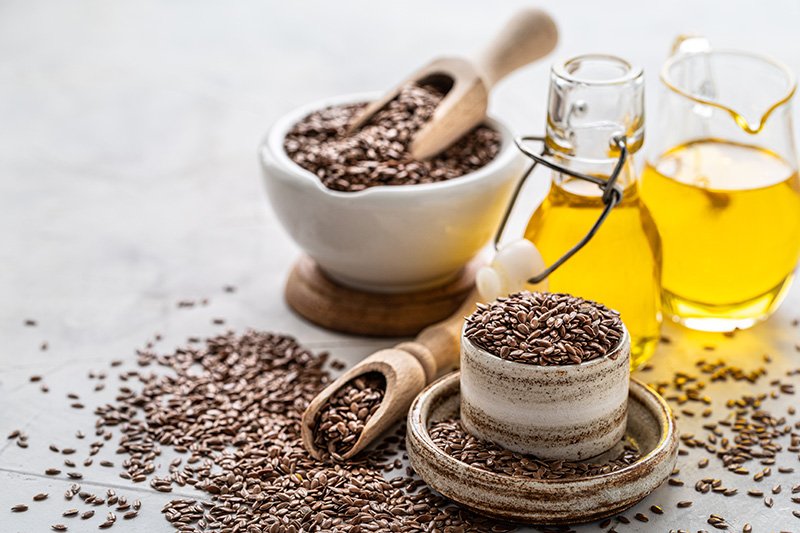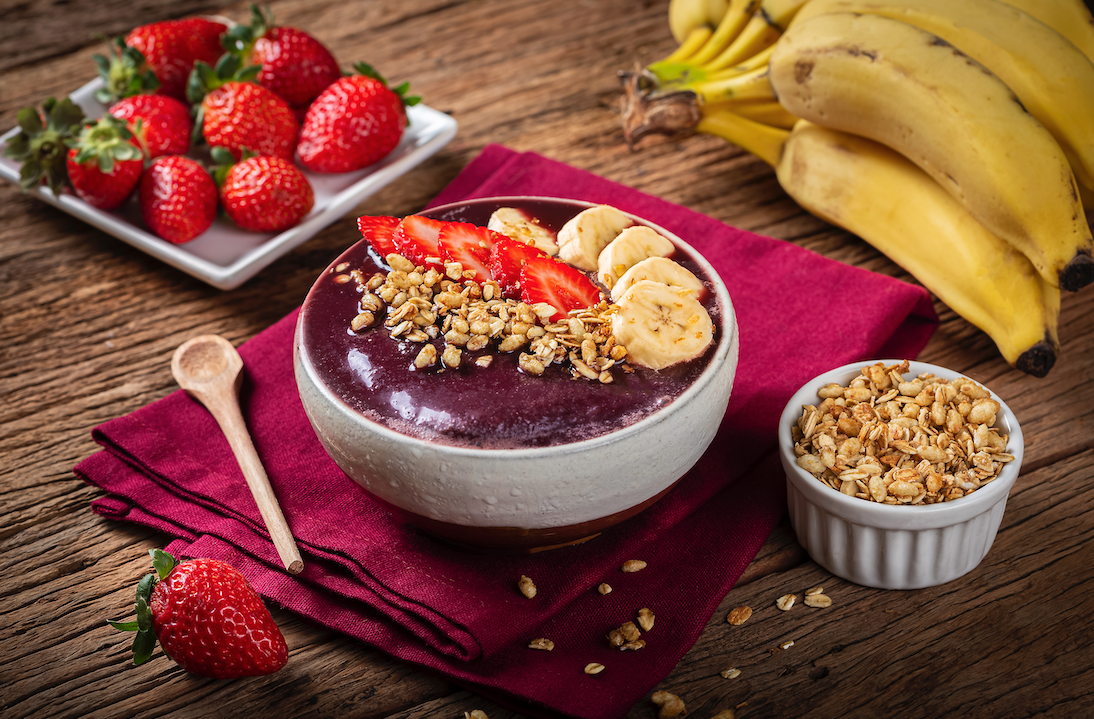
Flaxseed
Flaxseed is a great source of healthful fat, antioxidants, and fiber. They are a great source of Omega-3 essential fatty acids, that have been shown to have heart-healthy effects. Just 1 tablespoon has 8% of the daily recommended intake of fiber.
Usage
Loaded with nutrients
Flaxseed is high in protein, fiber, omega-3 fatty acids, thiamine, copper. and B vitamin.
Omega-3 fatty acids
This help feed the brain and keep it healthy.
Rich in fiber
Just 1 tablespoon of ground flaxseed has 2 grams of fiber.

Traditional Therapy
Although the medical applications of flax are numerous, any story about flax would not be complete without mentioning its role in the textile industry, where flax has been used to make clothes, sheets, and tablecloths for tens of thousands of years.
The earliest evidence of the use of wild flax fiber is 30,000 years old and dates back to what is now Georgia.
However, with the improvement in the availability of cotton, flax has lost some of its importance. Flax fibers are naturally smooth, thicker and 2-3 times stronger than cotton, and even more durable.
How to add fleexseeds to your diet?
Add to meal
Add tablespoon of ground flaxseed into yogurt, cereals, mayonnaise or mustard.
Bake
Bake ground flaxseed into cookies, muffins, breads and other baked goods.
Mahatma Gandhi observed that when flax seed becomes a regular food item among the people, there will be better health.
Flexseeds have big role in the textile industry, where flax has been used to make clothes, sheets, and tablecloths.
In ancient Egypt, flax was a symbol of purity - the Egyptians wrapped their mummies with linen fibers and presented it on the walls of Egyptian temples.
Today, the world's largest producer of flax is Russia, followed by Canada, Kazakhstan, and China.
Usage
Flaxseed is the most important part of the plant for medical and nutritional use. By squeezing it, one of the most important drying oils is obtained - linseed oil - which is used in painting and varnishing, as well as for the production of some pharmaceutical preparations.
Composition
Seed residues, after squeezing, are used as animal feed rich in proteins. There are 2 types of flax seeds - brown and yellow (golden), and both types contain similar nutritional properties and equal amounts of omega-3 fatty acids.
The most common of these acids is the essential alpha-linolenic acid, which the human body cannot create on its own, but must take in with food. Flax is an excellent source of this acid for vegetarians who do not consume fish. In addition to omega-3 acids, flaxseed also contains omega-6 (linoleic) and omega-9 (oleic) fatty acids, a high percentage of protein, dietary fiber, B vitamins (folic acid, niacin, thiamine, pantothenic acid).
Also, the seeds are extremely rich in minerals such as magnesium, phosphorus, zinc, and iron.
Science
Research shows that flax has multiple beneficial effects that classify it as good food for cardiovascular patients. For starters, flaxseed lowers LDL (bad) cholesterol - an effect that is more pronounced in women than in men. This antiatherogenic effect is achieved by reducing the production of inflammatory cytokines, in combination with the antioxidant effect and the presence of soluble flax fibers. Flax does not interact with cholesterol-lowering drugs (statins) and can be used together.
In addition, flax stabilizes and reduces pre-existing atherosclerotic plaques in blood vessels, thus reducing the possibility of stroke or heart attack, which has been experimentally confirmed in animals. In lowering cholesterol, whole flaxseed has been shown to be more effective than flaxseed oil. In addition to affecting cholesterol and blood pressure, flax also plays a significant role in diabetes.
Namely, oxidative stress is one of the factors that lead to the development of diabetes, and flax contains substances that can eliminate that stress, among which the most important antioxidant is SDG. Research has shown that flax improves glycemic control (stabilizing blood sugar levels) and that SDG in flax can reduce the incidence of type 1 diabetes and slow the development of type 2 diabetes if applied for at least 12 weeks.
Safety
Flaxseed and flaxseed oil have proven to be non-toxic in many ways and are considered safe for use in humans. Flaxseed must be dried and ripe, and if whole (not ground) is ingested, a sufficient amount of liquid must be ingested.
Flax can be used by adults and children older than 12, but not by pregnant and breastfeeding women. The most common side effect is bloating, while very rarely allergic reactions can occur. The daily dose of 50 g of flaxseed should not be exceeded due to the possible occurrence of frequent stools and diarrhea. Also, it should be noted that flax contains an antagonist of vitamin B6, so it is recommended to supplement this vitamin with prolonged use of flax.
Flax should not be used in patients who have difficulty swallowing. Also, flax should not be used for sudden constipation that lasts longer than 2 weeks and for undiagnosed bleeding from the anus, and it should be avoided for blockages of the digestive tract, intestinal paralysis, esophageal diseases, and sensitive bowel syndrome. There is also concern about the use of flax in hypothyroidism (reduced thyroid function) due to the phytoestrogens and unsaturated fatty acids it contains, and it is best to avoid it for now. Hypothyroidism can also cause constipation and should not be treated with flaxseed.
Fun Facts
Canada is the largest producer and exporter of flaxseed in the world, representing about 40% of world production.
Sources
Goyal, A., Sharma, V., Upadhyay, N., Gill, S., & Sihag, M. (2014). Flax and flaxseed oil: an ancient medicine & modern functional food. Journal of food science and technology, 51(9), 1633-1653.
Masoudi, N., Tabarrai, M., Niktabe, Z., & Dehghan, S. (2018). Antitumor effects of flaxseed in Iranian traditional medicine and contemporary medicine; a brief review. Research Journal of Pharmacognosy, 5(1), 71-77.



